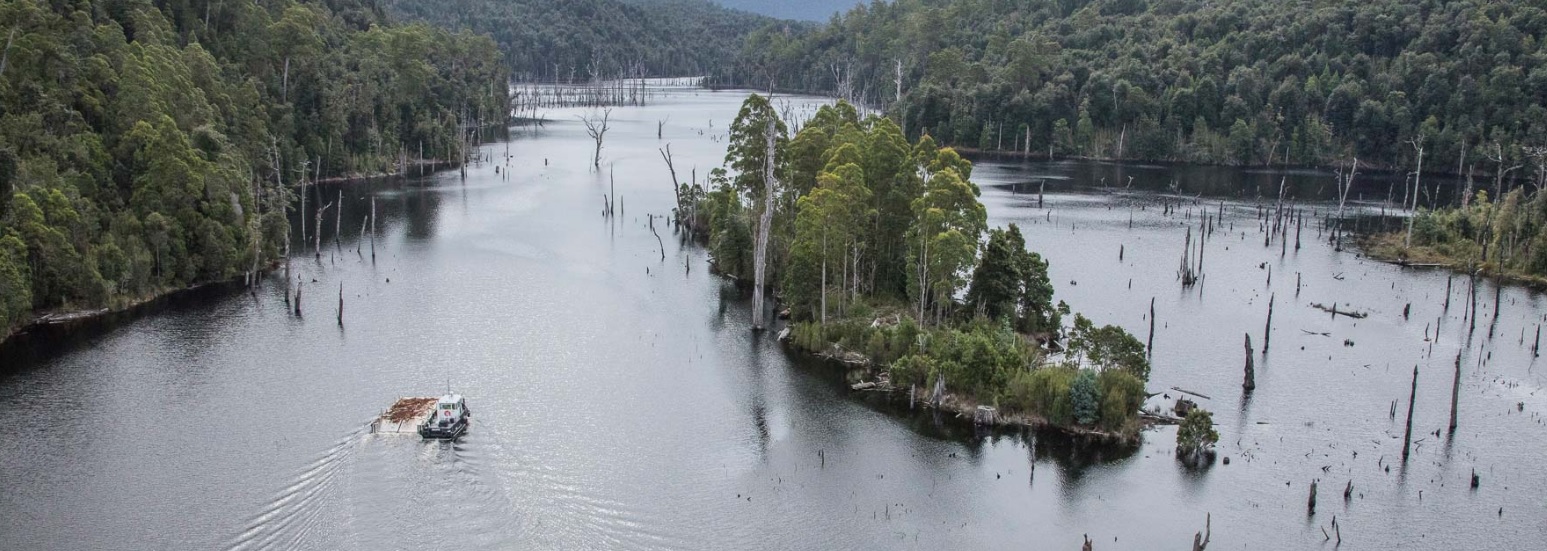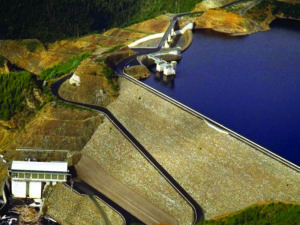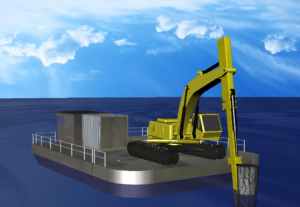HYDROWOOD
Below the waters of Lake Pieman on Tasmania’s west coast lies a treasure hidden for over 25 years. An ancient forest lost to the deep, dark waters. Lost, that is, until today.
When David first flew his Cessna over Pieman Lake he never would have guessed at the treasure hidden below the water’s surface. Three years, and a lot of hard work later, David, Andrew and their team have discovered the largest quantity of environmentally friendly specialty Tasmanian timber found in years. That includes some of Tasmania’s rarest and most sought after timbers.
Most species we harvest are in short supply and almost never found as intact logs. And they certainly don’t come with such a unique story.
This isn’t recycled wood already used and full of rusty bolts and nails. And it isn’t reclaimed wood found on a musty forest floor, years dead and scavenged from amongst the leaf litter.
This is real wood. Solid timber that comes untouched and intact.
Wood that craftsmen and master builders dream of working with. Wood with a story to tell, a character like no other and in quantities thought never to be seen again. This is Hydrowood. And now it is available to you.
THE RISE OF HYDROELECTRICITY
When plans to dam The Pieman were made in 1971, logging returned to the region. The area where Pieman Lake was to sit was opened up to forestry to avoid wasting the timber. But, once again the regions dense forest and inaccessible nature made for slow going and by the time the dam was ready to be filled only a small portion of the lakes footprint had been logged
A FORGOTTEN FOREST
Time and tide wait for no man, and as the Reece Dam’s water flowed and filled up Lake Pieman in 1986 the remaining forest was covered over with water. There, at the bottom of the lake, the lost forest has sat until now. Today Hydrowood returns to Lake Pieman with the same pioneering spirit as the original settler to finish the job.
PIONEERING OPPORTUNITY
Hydrowood is one the world’s first underwater forestry operations, so just about every step of our journey has presented us with challenges. Or as we like to call them, opportunities. It’s not every day you get to blaze a trail. We look forward to the hiccups and curly ones, it’s our chance to pioneer unique solutions.
SEEING THE WOOD FOR THE TREES
Finding trees in a lake as dark as it is deep is tough. Sonar was the obvious solution, but we went one better. We turned the volume up to 11, so our sonar not only tells us where the trees are, but what species they are too. This innovation saves us countless man hours and a whole heap of guess work.
TURNING FORESTRY ON ITS HEAD
Harvesting trees underwater is the same as on dry land, except upside-down. So we custom built a barge fitted with a waterproof harvester designed to go down into the depths instead of up into the canopy. This allows us to harvest upside-down and as fast as any land based operation
IS THE TIMBER AFFECTED BY THE WATER?
We have found that the water replaces the sap in the woods cell structure after it has been flooded which has provided some beneficial outcomes for the timber. These include a more stable timber to work with that has little shrinkage as it dries. The timber does not appear to have any stress or tension in it when it is green or dry and has been described as like working with butter by Simon Anchor, a well known Tasmanian timber designer and fine furniture maker. The timber also inherits some difference in colour giving it a unique feature that we believe can only be achieved by logs flooded for a long period in a lake environment.
WHY HASN’T THE TIMBER DECAYED LIKE IT DOES ON LAND?
The dam environment that the trees have been left standing in is very dark due to the tannins in the water, reasonably cold due to the nature of the west cost and the fact that Lake Pieman is fed water from three other dams upstream, and at depth there is reduced oxygen content. When these combine the wood does not decay rapidly if at all and has some beneficial outcomes as water replaces the sap in the woods cell structure after it has been flooded. Timber found in above the water line or in the area that is exposed to air as the lake levels rise and fall does indeed rot and is not useable for sawlog.







